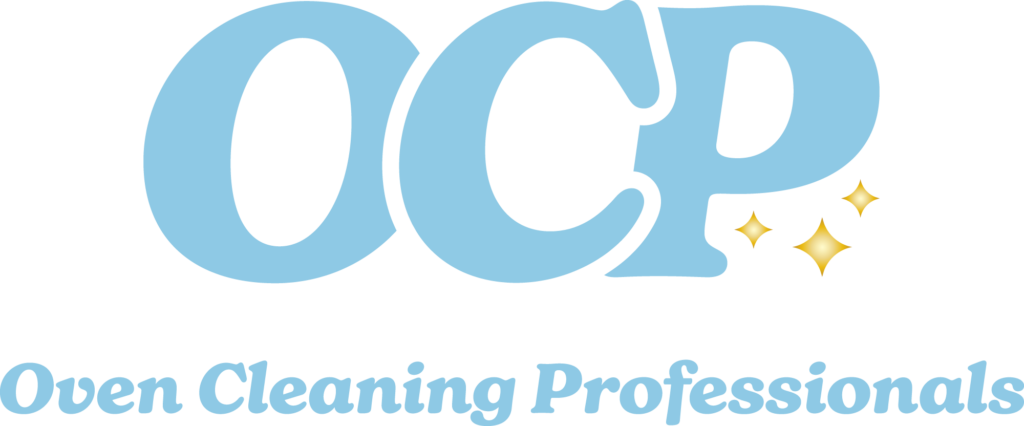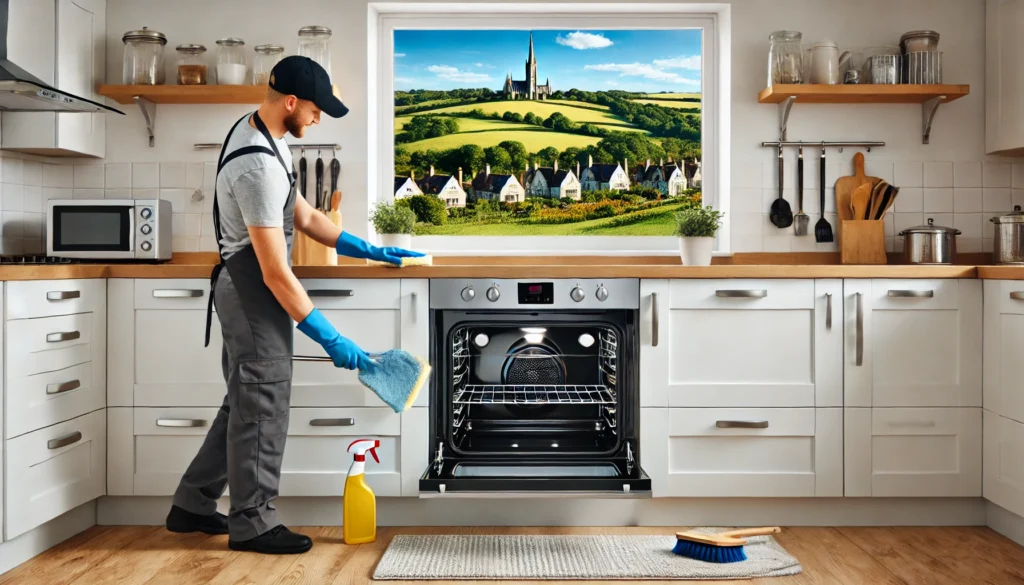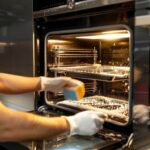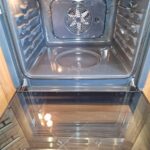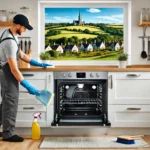If you’ve ever spent a weekend scrubbing burnt-on grease only to be left with streaks and a sore back, you’ll understand why so many households now book Oven Cleaning Professionals. This guide explains exactly what a professional clean involves, why it’s better for your oven (and your sanity), how to prepare for an appointment, and the aftercare that keeps your appliance gleaming for longer. Whether you’re a busy family, a landlord preparing for check-out, or you simply want your roast to taste better, here’s everything you need to know.
Why book a professional oven clean?
1) Deep cleanliness you can’t achieve with supermarket sprays
Domestic products struggle with baked-on carbon, thick grease and odours lodged behind liners and in hidden corners. Professional technicians dismantle safe-to-remove parts, soak them in heated dip tanks, and use fume-free degreasers that lift years of residue without damaging the finish.
2) Food tastes better
Old grease gives off smoke and an acrid smell when heated. A clean oven circulates heat evenly and eliminates taint, so pastry rises properly, veg caramelises rather than burns, and Sunday roasts come out crisp on the outside and succulent inside.
3) Lower energy use & longer appliance life
A dirty oven insulates heat in the wrong places, forcing the element and fan to work harder. Removing carbon and grime improves airflow and heat transfer, helping your oven reach temperature faster and reducing wear.
4) Safety first
Grease build-up is a fire hazard. Professional cleaning removes combustible residues around elements, doors and seals, and highlights issues (like perished gaskets or cracked bulbs) before they become serious.
5) No fumes, no mess
Reputable technicians use eco-friendly, non-caustic solutions in the home and contain the heavy degreasing in a heated tank inside the van. Your kitchen is left spotless and ready to cook straight away.
What exactly happens during a professional clean?
A typical appointment takes 1.5–3 hours depending on the appliance. Here’s the step-by-step:
- Initial inspection & protection – Floors and worktops are covered. The technician checks the make, model and condition, then tests the oven so you can see it working before the clean.
- Careful disassembly – Racks, trays, side supports, door panels (where safe), fan cover and back plate are removed. These parts carry the heaviest carbon build-up.
- Heated dip tank treatment – All removable items are soaked in a purpose-built hot tank in the van. The solution dissolves stubborn grease while protecting enamel and stainless steel.
- Interior detail – Inside the cavity the technician applies water-based, fume-free degreasers, agitating gently to lift residue from the roof, walls and floor of the oven. Elements and the fan area are cleaned without submerging electrics.
- Glass & door seals – Door glass is removed where appropriate for a thorough clean, including between panes. Seals are degreased and inspected; worn seals are flagged for replacement.
- Exterior finish – Knobs, fascia, handles and stainless fronts are polished. Control markings are protected to avoid wear.
- Reassembly & test – Components are rinsed, dried, and refitted. The oven is switched on to burn off any remaining moisture and confirm smooth operation.
- Handover – You’ll get aftercare tips, an odour-free oven, and immediate cooking readiness.
What appliances do professionals clean?
- Single & double ovens
- Range cookers and AGAs (including lids and hotplates)
- Hobs – gas, ceramic or induction
- Extractor hoods & filters
- Microwaves & combi ovens
- BBQs (seasonal)
- Trays, racks and grill pans
If you have a self-cleaning (pyrolytic) oven, professionals can still help: they remove debris the cycle leaves behind, safely clean the door glass and seals, and handle parts the oven can’t self-treat.
How to prepare for your appointment
A little prep helps the visit run smoothly:
- Clear the area around the oven and sink so the technician can access water and plug sockets.
- Remove personal items from the hob and from inside the oven if you can (any heavy racks will be handled by the technician).
- Keep pets and little ones safe in another room while the oven door is off the hinges.
- Let us know if any knobs are loose, bulbs have blown, or the door doesn’t close properly — we’ll check these carefully.
Aftercare: making your clean last longer
- Wipe spills quickly once the oven cools; sugar and fat are easier to lift when fresh.
- Use a drip tray under roasts to catch fat and prevent smoking.
- Avoid harsh scouring pads and caustic sprays — they scratch enamel and cloud glass.
- Heat briefly after messy cooks to evaporate moisture, then wipe with a damp microfibre.
- Book top-ups every 6–12 months depending on how often you cook; frequent bakers and families may prefer every 4–6 months.
Eco-friendly and home-safe cleaning
Modern professional oven cleaning avoids the strong caustic products that can burn skin and leave unpleasant fumes. Instead, technicians rely on water-based, biodegradable degreasers and controlled heat in the dip tank. Waste is handled responsibly, and your kitchen remains ventilated and odour-free. You can cook again as soon as we finish.
Landlords, tenants & end-of-tenancy
A spotless oven is a common deposit clause — and one of the most frequent reasons deductions are made. A professional clean provides visible results and itemised receipts that satisfy inventory checks. For landlords and agents, scheduled cleans between tenancies protect your appliance, reduce call-outs and improve tenant satisfaction.
Common questions (quick answers)
How long does it take?
Most single ovens take around 90 minutes; doubles and ranges can take 2–3 hours. We’ll advise when booking.
Will there be a smell?
No harsh chemical smell. We use fume-free products and rinse thoroughly. You can cook straight away.
Do you replace bulbs or door seals?
We carry common bulbs and can advise on seals. If a part needs ordering, we’ll point you to the correct specification.
Is the clean safe for enamel and glass?
Yes. No caustic product is used inside your home. We protect surfaces and polish glass without scratching.
What about self-cleaning ovens?
We complement (not replace) the pyrolytic cycle — tackling glass, door seals, the frame and any residue the cycle leaves.
Are you insured?
Professional technicians carry public liability insurance and follow manufacturer-safe methods.
Signs your oven needs attention
- Persistent smoke or smells when preheating
- Uneven cooking or hot spots in bakes
- Sticky door that doesn’t seal properly
- Visible brown carbon on the fan cover, racks and glass
- Greasy extractor filters and noisy fans
If you notice any of the above, a deep clean can quickly restore performance and prevent damage.
What makes a great oven-cleaning company?
- Trained technicians with experience across leading brands
- Non-caustic, child- and pet-safe cleaning methods
- Transparent process with clear options for hobs and extractors
- Respect for your home — protective sheets, tidy work and punctuality
- Before/after photos and simple aftercare advice
- Guaranteed results — if you’re not delighted, they’ll put it right
Ready for a like-new oven?
Booking is simple: choose a time that suits you, and we’ll handle the rest — from careful disassembly to gleaming reassembly. No fumes, no mess, and no wasted weekends scrubbing. Just a fresh-looking oven that cooks beautifully and a kitchen that smells clean.
Oven Cleaning Professionals: sparkling results, zero hassle.
